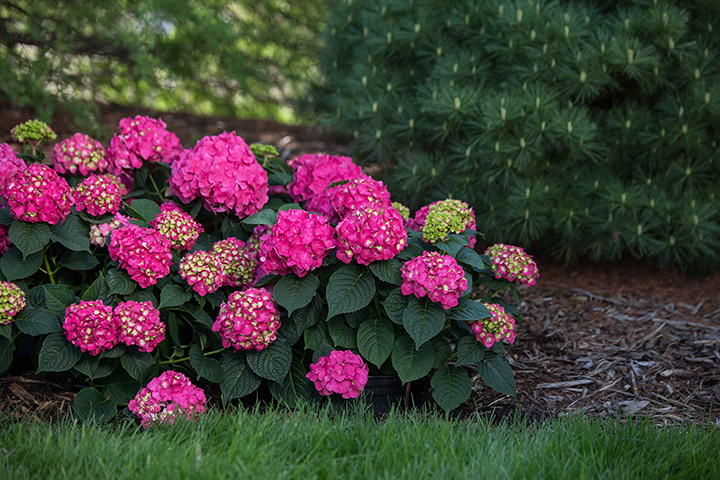Raspberry Hydrangeas: The Ultimate Guide To Growing And Caring For These Gorgeous Blooms
Raspberry Hydrangeas: The Ultimate Guide to Growing and Caring for These Gorgeous Blooms
Raspberry hydrangeas are a stunning addition to any garden. Their vibrant raspberry red blooms are sure to turn heads, and they're relatively easy to care for. If you're looking for a beautiful and low-maintenance hydrangea, raspberry hydrangeas are a great option.
In this guide, we'll discuss everything you need to know about growing and caring for raspberry hydrangeas. We'll cover topics such as:
- Choosing the right location
- Planting and fertilizing
- Pruning
- Overwintering
- Pests and diseases
We'll also provide some tips on how to get the most out of your raspberry hydrangeas. So whether you're a beginner gardener or you're just looking for some more information, this guide has you covered.
Choosing the right location
Raspberry hydrangeas prefer moist, well-drained soil and partial shade. They can tolerate full sun in cooler climates, but they'll need more shade in warmer climates.
When choosing a location for your raspberry hydrangea, look for a spot that gets morning sun and afternoon shade. This will help to prevent the leaves from burning in hot weather.
Planting and fertilizing
Raspberry hydrangeas can be planted in the spring or fall. When planting, dig a hole that is twice as wide as the root ball. Backfill the hole with soil, and water well.
Raspberry hydrangeas do not need to be fertilized often. A light application of fertilizer in the spring will help to promote blooms.
Pruning
Raspberry hydrangeas should be pruned in the spring, before new growth begins. Prune back any dead or damaged branches, and lightly trim the remaining branches.
Overwintering
Raspberry hydrangeas are hardy in zones 4-9. In colder climates, they may need to be protected from the cold. Mulch around the base of the plant with a layer of 2-3 inches of organic matter. You may also need to cover the plant with a burlap sack or other protective covering.
Pests and diseases
Raspberry hydrangeas are generally resistant to pests and diseases. However, they can be susceptible to aphids, scale, and powdery mildew. If you see any pests or diseases, treat them immediately with an appropriate insecticide or fungicide.
Getting the most out of your raspberry hydrangeas
Here are a few tips to help you get the most out of your raspberry hydrangeas:
- Water regularly, especially during hot weather.
- Fertilize lightly in the spring.
- Prune in the spring, before new growth begins.
- Protect from the cold in colder climates.
- Watch for pests and diseases, and treat them immediately.
With proper care, your raspberry hydrangeas will thrive for many years to come.
Raspberry hydrangeas are a beautiful and unique type of hydrangea that is known for its vibrant raspberry-colored blooms. These shrubs are relatively easy to care for and can be grown in a variety of climates. If you are looking for a stunning addition to your garden, a raspberry hydrangea is a great option.
For more information about raspberry hydrangeas, I recommend visiting . This website has a wealth of information about these shrubs, including planting, care, and troubleshooting tips. You can also find photos of different raspberry hydrangea varieties, so you can choose the perfect one for your garden.
FAQ of raspberry hydrangea
1. What is a raspberry hydrangea?
A raspberry hydrangea is a type of hydrangea that is known for its large, showy flowers that bloom in shades of raspberry, pink, and blue. It is a deciduous shrub that can grow up to 6 feet tall and 5 feet wide. Raspberry hydrangeas are native to eastern Asia, but they are now grown in many parts of the world.
2. What are the different colors of raspberry hydrangeas?
The color of raspberry hydrangeas can vary depending on the soil pH. In acidic soil, the flowers will be blue. In neutral soil, the flowers will be pink. In alkaline soil, the flowers will be white.
3. How do I care for a raspberry hydrangea?
Raspberry hydrangeas are relatively easy to care for. They need full sun or partial shade and well-drained soil. They should be watered regularly, especially during the hot summer months. In the fall, you can apply a layer of mulch around the base of the plant to help protect it from the cold winter weather.
4. How do I deadhead a raspberry hydrangea?
Deadheading is the process of removing spent flowers from a plant. This helps to encourage new flower growth. To deadhead a raspberry hydrangea, simply pinch off the spent flowers with your fingers. You can also use a pair of scissors.
5. How do I propagate a raspberry hydrangea?
There are two main ways to propagate raspberry hydrangeas: by division and by cuttings.
- To propagate by division, dig up the plant in the fall or early spring. Then, divide the root ball into several sections, each with at least one healthy root. Plant the divisions in well-drained soil and water them well.
- To propagate by cuttings, take 4-6 inch cuttings from the plant in the spring or summer. Remove the bottom leaves from the cuttings and dip them in rooting hormone. Plant the cuttings in well-drained soil and keep them moist. The cuttings should root in 4-6 weeks.
Image of raspberry hydrangea
5 different images of "raspberry hydrangea" from Pinterest:
- Image 1: A close-up of a raspberry hydrangea flower, showing the deep pink petals and the green center.

- Image 2: A full shot of a raspberry hydrangea bush, showing the clusters of flowers in full bloom.

- Image 3: A raspberry hydrangea in a garden setting, with other flowers and plants in the background.

- Image 4: A raspberry hydrangea in a vase, with a few other flowers for decoration.

- Image 5: A raspberry hydrangea painted in a watercolor style.

Post a Comment for "Raspberry Hydrangeas: The Ultimate Guide To Growing And Caring For These Gorgeous Blooms"